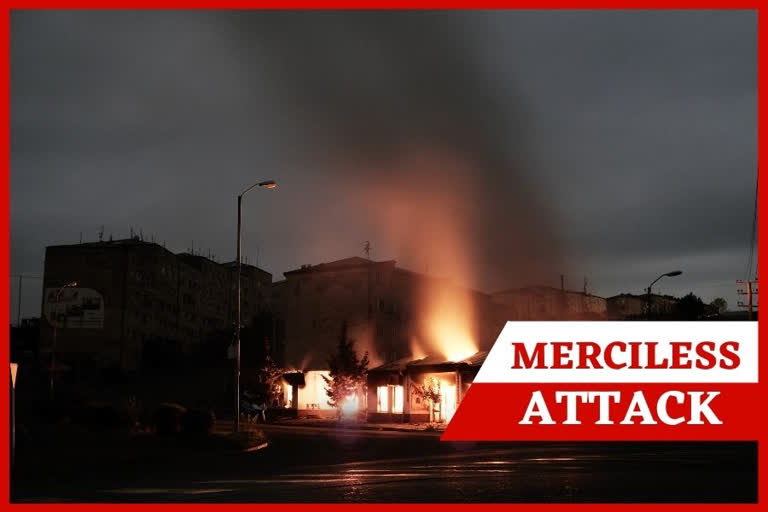Baku: The fighting between Armenian and Azerbaijani forces continued on Sunday over the separatist territory of Nagorno-Karabakh, with Azerbaijan's second-largest city coming under attack.
Azerbaijani officials said Sunday that Armenian forces attacked Ganja, the country's second-largest city. Hikmet Hajiyev, an aide to the Azerbaijani president, tweeted a video depicting damaged buildings and called it the result of “Armenia’s massive missile attacks against dense residential areas" in Ganja.
It wasn’t immediately possible to verify the authenticity of the video. Hajiyev said in another tweet that attacks on Ganja and other areas in Azerbaijan were launched “from the territory of Armenia.”
Armenia's Defense Ministry said that “no fire of any kind is being opened from the territory of Armenia in Azerbaijan’s direction.” But Nagorno-Karabakh's leader, Arayik Harutyunyan, confirmed on Facebook he ordered “rocket attacks to neutralize military objects” in Ganja. His spokesman, Vahram Poghosyan, said the territory's army destroyed a military airport in Ganja, a claim Azerbaijani officials denied.
The attack on the city killed one civilian and left four others wounded, the Azerbaijani Foreign Ministry tweeted. Harutyunyan said he ordered his forces to stop the attacks on Ganja to avoid civilian casualties. Nagorno-Karabakh's leader added that “proportionate and crushing” strikes targeting the opponent's forces would continue if Azerbaijan fails “to draw appropriate lessons.”
The fighting, which broke out on September 27 and has continued for eight straight days, is the biggest escalation in years in the decades-long dispute over Nagorno-Karabakh. The region lies within Azerbaijan but is controlled by local ethnic Armenian forces backed by Armenia. Both sides said the hostilities have spread beyond the breakaway territory and accused each other of attacking areas outside Nagorno-Karabakh.
Ganja, with a population of more than 330,000, is located roughly 100 kilometres (about 60 miles) north of Stepanakert, Nagorno-Karabakh's capital.
“Opening fire on the territory of Azerbaijan from the territory of Armenia is provocative and expands the zone of hostilities,” Azerbaijani Defense Minister Zakir Hasanov said in a statement Sunday.
As the fighting resumed Sunday morning, Armenian officials accused Azerbaijan of carrying out strikes on Stepanakert and targeting the civilian population there. Nagorno-Karabakh's leader Harutyunyan said that in response, his forces would target “military facilities permanently located in major cities of Azerbaijan.”
In a statement issued later on Sunday, Azerbaijan's Defense Ministry rejected accusations of targeting civilians and civilian infrastructure.
